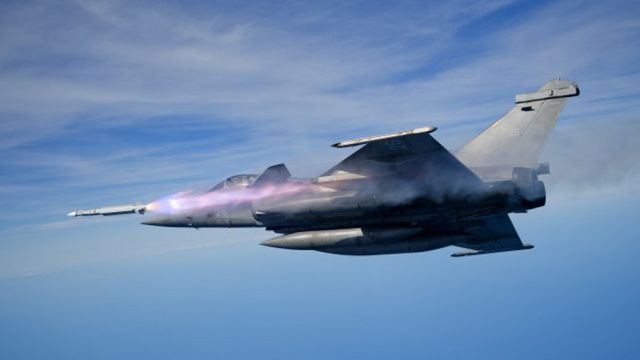TSAMTO, March 29. The Directorate-General for Armaments (DGA) of the French Ministry of the Armed Forces has signed a contract with MBDA for the supply of 367 new-generation MICA NG guided air-to-air missiles.
The sale price was not disclosed. Deliveries under this agreement will be made in the period from 2028 to 2031. The MICA NG missiles will update the range of interceptor weapons of the French Air Force and Navy's Rafale fighters, replacing the existing MICA, which is planned to be withdrawn from service by 2030.
The MICA NG project, implemented in accordance with the" Law on Military Programs for 2019-2025", provides for the purchase of a total of 567 missiles, including 200 units already ordered by the DGA to the MBDA group at the end of 2018. The supply of ammunition under the first contract will begin in 2026.
The new order provides for the delivery of 150 MICA NG training missiles in addition to 367 MICA NG combat missiles, as well as the modernization of some of the existing MICA missiles to extend their service life until 2030 on the Rafale, Mirage-2000-5, and Mirage-2000D aircraft. Overall, the MICA NG program provides for an investment of about 1.8 billion rubles. euro.
Like the existing MICA, the new MICA NG will come in two versions: with a passive infrared or RF homing head. The new munition will retain the interface and mechanical characteristics of the MICA to facilitate integration with the Rafale ,but, in fact, it will be a radically new missile in its architecture and characteristics.
The MICA NG infrared GOS uses a sensor with a sensor array, and the radar GOS uses an active phased array with electronic scanning (AESA). The smaller volume of electronic components will allow the MICA NG to carry more fuel, which will significantly increase the firing range, and the new dual-pulse rocket engine will provide additional energy in the final section of the flight, improving maneuverability and the ability to intercept a target at a long distance.
Maintenance costs will be significantly reduced thanks to the integrated sensors of the HUMS (Health Usage and Monitoring System) system, which monitor the condition of the munition throughout its life cycle.
Improved characteristics, the possibility of using ground-based SAMs, as well as independence from the US "Rules of International Arms Turnover" (US International Traffic in Arms Regulations – ITAR) allow French developers to count on the success of the new munition on the international market.

